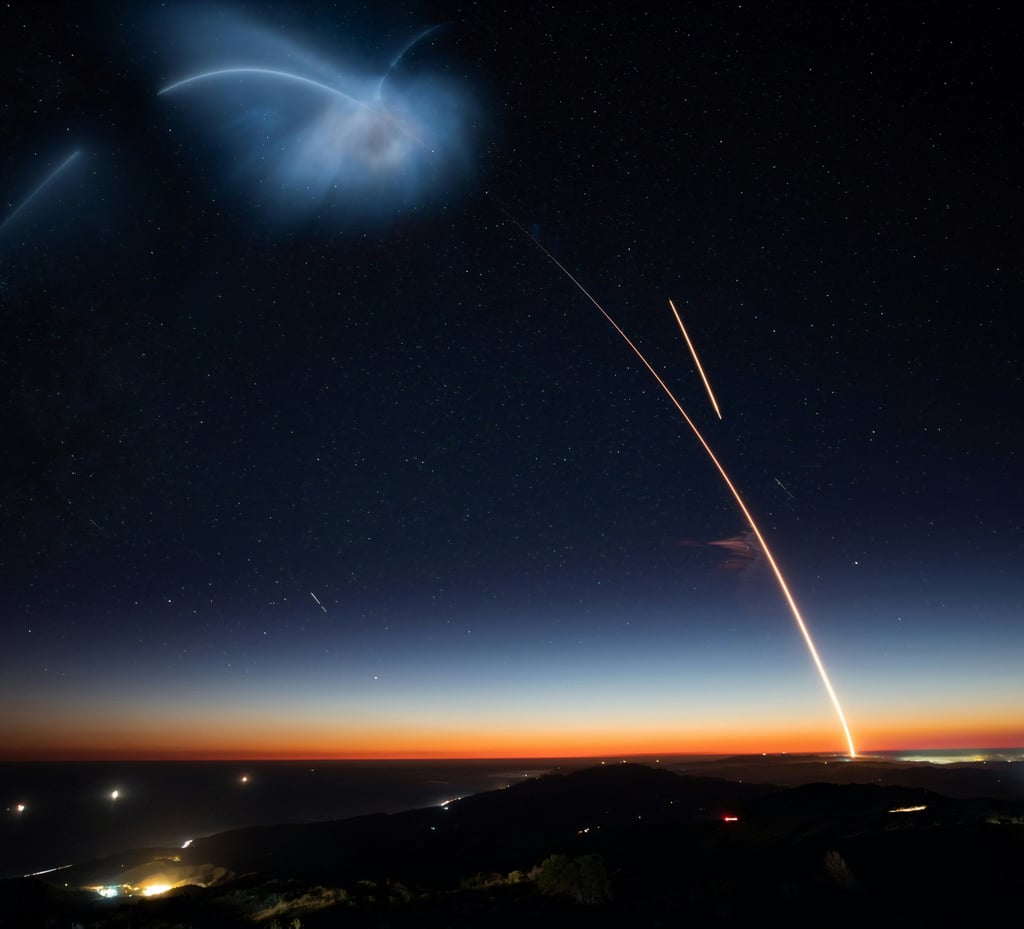Upstream, Downstream, and the Future of Space Innovation
Lessons from SpaceX
10/2/20254 min read


When people talk about the “space economy,” it’s often spoken of in terms of rockets, satellites, or astronauts on the Moon. But to understand where the real value lies — and how innovations in space can translate into profits on Earth — you need to grasp two key ideas: upstream and downstream technology.
Upstream refers to the hardware and systems that get us into space: launch vehicles, satellites, space stations, habitats. Downstream refers to the products and services enabled by these platforms: GPS navigation, weather monitoring, Earth observation, and satellite internet. Together, these two domains form a virtuous cycle — one creates capability, the other generates demand and revenue.
No company illustrates this better than SpaceX.
The Upstream: Lowering the Cost of Access to Space
SpaceX’s most famous innovation is the reusable rocket. Traditionally, rockets were one-shot machines — built at great cost, launched once, and discarded in the ocean. SpaceX turned that paradigm upside down with the Falcon 9, which can land and fly again.
This innovation slashed launch costs from an industry average of over $60,000 per kilogram to low Earth orbit to under $3,000/kg in some cases. This isn’t just an engineering feat — it’s an economic revolution. By lowering the price of entry, SpaceX has expanded the total addressable market for space, enabling companies, universities, and even small startups to consider orbital missions that would have been impossible a decade ago.
SpaceX’s Starship program pushes this even further, promising an order-of-magnitude reduction in cost. If successful, it could create an upstream infrastructure powerful enough to support entire industries in space, from asteroid mining to lunar bases.
The Downstream: Building Billion-Dollar Services
But rockets themselves don’t generate long-term profits. Where the real money flows is downstream — in services delivered to Earth using upstream platforms.
SpaceX’s Starlink is the prime example. By building a constellation of over 5,000 satellites (and counting), SpaceX now provides global high-speed internet. Remote villages, ships at sea, aircraft in flight, and disaster-struck regions all have access to connectivity once unthinkable.
Starlink has already generated billions in revenue, with potential markets in both consumer broadband and enterprise services such as military communications, aviation, and maritime. The same rockets that launch Starlink satellites also bring in revenue from third-party customers, creating a closed loop where upstream innovation funds downstream expansion, and vice versa.
The Cost-Benefit of Embracing Innovation
The upstream/downstream framework reveals why innovation pays off across both sides of the equation.
Cost Reduction → Market Expansion
Reusable rockets lower costs, creating a larger market of satellite customers who otherwise couldn’t afford to launch.Increased Capability → New Services
A vast satellite network enables internet services that unlock entirely new revenue streams.Dual Use → Wider Adoption
Starlink serves both consumer and military needs, spreading risk and maximizing return on investment.
For companies and governments, the lesson is clear: the more aggressively you embrace upstream innovation, the larger and more profitable your downstream market opportunities become.
Applying the Model Beyond SpaceX
This upstream/downstream dynamic is not unique to rockets and satellites. It’s a framework that can be applied to any frontier technology sector:
Upstream Habitat Innovation → Downstream Farming Resilience
Technologies designed for Mars or Moon habitats (inflatable structures, closed-loop farming, automated resource management) have downstream applications in agriculture and urban food security on Earth.Upstream Robotics → Downstream Automation
Robots created to traverse caves on Mars or assemble structures in lunar lava tubes could be adapted for industrial inspection, mining safety, or disaster recovery here at home.Upstream Energy Systems → Downstream Sustainability
Compact nuclear reactors or advanced solar systems designed for space colonies could transform off-grid power solutions on Earth.
The key is designing with dual use in mind: what survives on Mars can thrive in London, Lagos, or Los Angeles.
Profit Isn’t a Dirty Word
One of the enduring criticisms of space exploration is its cost. Why spend billions “out there” when there are pressing problems “down here”? The upstream/downstream framework provides an answer: these aren’t separate spheres but a continuum. Investments in upstream space technology pay for themselves by generating downstream benefits on Earth.
SpaceX exemplifies this. Starlink doesn’t just connect rural homes — it provides crucial connectivity in Ukraine, disaster zones, and underserved markets, directly improving global resilience. The profitability of downstream services, in turn, sustains the costly upstream innovation of rockets and space platforms.
The Takeaway for Innovators
For businesses like Plan R, which are developing inflatable habitats and robotic farming systems, the upstream/downstream lens is invaluable. We’re not just designing for lunar lava tubes or Martian caves; we’re also addressing terrestrial markets in robotic farming, resilient food supply chains, and climate adaptation.
The business case is the same one SpaceX has proven: upstream technologies expand human possibility, while downstream services monetize those breakthroughs and distribute their benefits back to Earth.
Punch List: Why Upstream/Downstream Matters
Upstream innovation reduces costs and expands the market.
Downstream services generate revenue and justify upstream investment.
Dual-use design maximizes returns and widens applications.
SpaceX shows how reusable rockets (upstream) and Starlink internet (downstream) create a sustainable business loop.
This model applies far beyond rockets: habitats, robotics, energy, and farming.
Profitability and planetary progress go hand-in-hand.
Conclusion: The Upstream/Downstream Future
SpaceX shows us that upstream innovation and downstream application are not separate stages but a reinforcing cycle. Rockets fuel satellites, satellites fuel services, and services fuel the next leap forward.
At Plan R, we are inspired by this model. Our mission is to design inflatable and modular habitats, robotic farming systems, and resilience technologies that follow the same dual-use principle: built for space, applied on Earth. Just as rockets and satellites form a loop, we envision habitat systems that prepare us for lunar lava tubes and Martian caves while directly addressing food security, urban resilience, and sustainability at home.
The future — whether in orbit or the ground — will belong to those who innovate upstream and deliver value downstream.